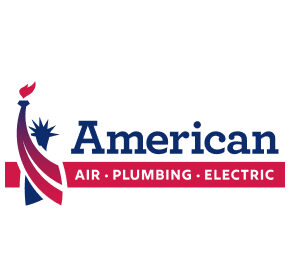As winter progresses, we tend to spend more time indoors. Outside temperatures continue to plummet, the days grow shorter, and nights are longer. It’s perfectly natural to spend more time at home where there’s more light and warmth. But what’s not natural is the quality of your air. Indoor air is two to five times more likely to become polluted than outside air. Since most of us insulate our homes to conserve heat, we create a trap for airborne toxins.
What Are Indoor Air Pollutants?
Indoor air pollutants are tiny molecules or specks found within all buildings. Short and long-term exposure causes non-communicable diseases, some of which can be fatal.
Asbestos
Asbestos is among the top four indoor air pollutants commonly found in indoor insulation. This mineral fiber is resistant to fire and heat, making it an excellent element for soundproofing, fireproofing, and insulation. These chemical attributes make asbestos popular in most hospitals and Healthcare facilities.
However, asbestos has a dark side. Tiny fibers of the substance get stuck in the air and can cause indoor air contamination. Contamination happens during renovation projects where the material gets torn or removed. Inhaling causes long-term issues because the particles remain in your lungs for an extended period. Scars form in the lung tissue and cause a long-term condition known asbestosis. People with this condition experience chest pains and shortness of breath. Long-term exposure can cause some cancers to form in the chest lining or abdomen.
Mold and Bacteria
Common issues such as molds, allergens, and viruses fall into this category. All have the potential to create a lot of health problems for homes and Healthcare settings. Tiny particles of bacteria get caught in the air and can settle on food, water, clothing, and skin. Bacteria results from lack of sanitation and poorly vented areas. Like mold, it thrives in wet or damp areas, such as a cabinet underneath the sink or a restroom. If you’ve experienced water leaks due to faulty pipes or recent storm damage, it’s best to have your home inspected.
Mold grows exponentially in areas that are damp and humid. Common areas that foster mold growth are bathrooms and basements. Water leaks, flooding, and steam from daily showers are opportunities for mold to form. Once it grows, mold releases spores, which cause breathing problems for everyone indoors. Proper ventilation, such as bathroom fans, can help reduce condensation and moisture buildup by venting them away from the area.
Carbon Monoxide
Carbon monoxide is a colorless, odorless gas that sneaks into your home without warning. It is a serious pollutant that comes from a variety of sources. Burning wood, oil, gasoline, natural gas, and propane are some of carbon monoxide’s significant origins. If you use a propane heater, a gas stove, or anything that burns fuel, you could be at risk for exposure to carbon monoxide.
If you experience headaches, dizziness, nausea, or sudden fatigue, seek medical attention immediately. If you use natural gas as a fuel source, be sure to call a professional right away. They can check around for any gas leaks inside your home.
Secondhand Smoke
In recent decades, businesses and organizations have stepped up efforts to curb smoking within their buildings. Federal regulations have made smoking illegal in some areas. Restaurants, airports, and other facilities no longer have designated smoking areas. Some residential areas like dorms and apartment complexes now have rules that prohibit smoking indoors. The best rule of thumb is to smoke outdoors and away from most buildings.
Secondhand smoke is another leading contributor to indoor air pollutants. In fact, the pollution from cigarette smoke is ten times greater than that caused by diesel exhaust. Cigarette smoke is an aerosol type with 90% gas and 10% particles. Particles and compounds like tar, nicotine, and heavy metals are found in everyday tobacco products. They are emitted through cigarettes and linger in the air for an extended period. Inhaling these chemical compounds can cause breathing and respiratory issues for most people. What’s even more risky is when these particles interact with other airborne toxins and form other harmful compounds that linger for several months. Ventilation efforts do little to rid your home of the impact of secondhand smoke. The best prevention strategy is to implement a “no smoking” rule.
Volatile Organic Compounds
Volatile organic compounds are toxic substances that originate from artificial chemicals. Household paints, pharmaceuticals, and refrigerants all contain VOCs. VOC emissions can cause short and long-term side effects if left to linger inside your home. Paint strippers, household cleaning supplies, and pesticides all contain volatile organic compounds that remain during active use. Symptoms of exposure include eye, nose, and throat irritation. In some cases, you may have nausea, headaches, or coordination problems. Proper ventilation is the best prevention strategy. Another is to follow manufacturer protocols when using certain household chemicals and dispose of anything you no longer use. Minimal exposure to volatile organic compounds is strongly advised.
Outdoor Air Pollution
Outdoor pollutants can impact your indoor air quality. Standard gateways for these toxins are open doors, windows, and HVAC systems. Polluted air from dirty filters and duct systems is one of the leading causes of indoor air pollution. If you live in an urban area, your risk of exposure is doubled. Greenhouse emissions from diesel fuel and gasoline can get into your home without proper ventilation. If you live near a freeway or a busy street, you’ll need to check your air filters more frequently. The same holds true if you live near a factory or an industrial compound.
Checking your air ducts is another good preventive strategy. Make sure there’s no loose garbage, such as potato chip bags or other debris. Have a professional clean your ducts and vents of any dust, dirt, or mold to improve healthy air circulation. Doing so decreases your chances of breathing issues from mold and allergens.
What Else Can You Do?
Household cleaning is an excellent preventive strategy, and it’s something you can do on your own to protect your indoor air quality. Dusting, sweeping, and vacuuming can rid your home of the dust that causes terrible indoor air quality. You can also make sure that you use disinfectant made with less harmful chemicals to rid your home of any bacteria that carry viruses.
Call Our Professional HVAC Company
At American Air, Plumbing, and Electrical, we’ll do everything possible to help keep your Orlando, FL, area home comfortable and pollution-free. We understand the value of fresh, clean air that’s at a reasonable temperature for you. Our professionals are well-trained in every manner of residential HVAC service. We provide heating and cooling installations, repairs, and maintenance HVAC services for your home. We offer ductwork, duct cleaning, and ductless AC and furnace repair, installation, and maintenance. Don’t hesitate to visit us online today to ask about our online discount coupons!
On our website, you can communicate with a American Air, Plumbing, and Electrical representative about our indoor air quality solutions for your Orlando home or call directly.


